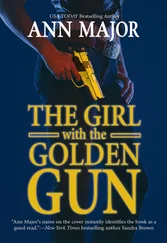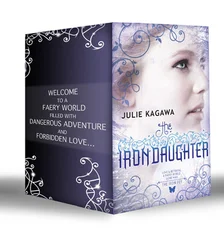The passion for lethality suffuses the process through which guns and ammunition are conceived and made. Manufacturers routinely test their prototypes not by firing them at tin cans, but by blasting away at blocks of Jell-O–like goo—ordnance gelatin—intended specifically to simulate human tissue. Their enthusiasm for gore can lead to some vivid advertising. In the March/April 1992 issue of American Handgunner , a magazine for the civilian firearms consumer, the Eldorado Cartridge Corp. ran a full-page ad for its Starfire cartridge under the bold headline “IF LOOKS CAN KILL.” The ad called the Starfire the “deadliest handgun cartridge ever developed for home or personal defense, and hunting” and went on to describe how the bullet expands on impact “resulting in a massive wound channel.” Its deep penetration, the ad crowed, “helps assure fast knockdown.”
During one of several visits to a gun show in Frederick, Maryland, I stood at one dealer’s table beside a man and his young son who, like me, were intently watching a promotional video produced by Power-Plus, a maker of exotic ammunition. The narrator, dressed in a dark T-shirt and speaking in that laconic backcountry drawl that characterizes today’s notion of toughness, demonstrated his company’s rounds by firing a sample of each into a fresh block of yellowish gelatin, with the camera then cutting to offer a close side-view of the depth of penetration and the jagged wound channel coursing through the translucent plasma. Each round was more destructive than the last, until the narrator fired a sample of the company’s Annihilator high-explosive bullets, which slammed into the gelatin, exploded, and knocked the quivering block from its stand. Anyone wondering who might use such a bullet need only look to John Hinckley, who used a similar bullet marketed under the brand name Devastator in his attack on Ronald Reagan. Only one of the bullets he fired did actually explode, much to the benefit of Reagan, who did not even realize he had been shot, but to the lasting detriment of James Brady, in whose brain that one bullet happened to perform as intended.
The Power-Plus narrator moved on to demonstrate the company’s Multi-Plex rounds, which launched anywhere from two to four bullets from a single cartridge. An Alabama mail-order ammunition dealer described these bullets in its catalog as “an outstanding choice for home defense.”
As if all this weren’t enough, our narrator next demonstrated the effects of the company’s bullets on a pail packed with clay. This time those of us watching were treated to the additional audio enticement of hearing the wet slapping sound of the clay as the bullets entered, fragmented, and ruptured the surrounding muck, gouging caverns the size of pumpkins.
“Still watching, Son?” the father asked softly, his hands resting on his son’s shoulders.
His son, clearly entranced, nodded slowly.
Gun shows are marvelous places to capture a feel for America’s gun culture. The moment I stepped from my car, I saw a middle-aged man with a well-developed paunch sauntering toward the show entrance. He was dressed in a short-sleeve shirt and loose, wrinkled slacks and looked like a TV producer’s dream image of the average suburban American male—except, that is, for the black Colt AR-15 assault rifle slung over his shoulder.
The show occupied two buildings at the Frederick County fairgrounds. A few men walked the aisles wearing little signs on their backs listing the guns they owned and wanted to sell. Another man had stuck a FOR SALE sign in the barrel of the rifle dangling at his back. Seated behind battered fold-down tables, dealers sold guns, books, accessories, and ammunition, even those hard-to-find .50-caliber rounds needed for long-range sniper rifles and battlefield machine guns. Several dealers sold books on how to kill and, for those who knew how already, how to do it more effectively, including books on how to make silencers, military manuals on how to make booby traps, black-covered Army manuals on how to make “improvised munitions,” and a nifty little tome courtesy of the Pentagon on how to brush up on your sniper skills.
One dealer offered a Browning heavy machine gun complete with tripod. A thin, balding clerk wearing a black T-shirt commemorating the 1992 “Machine Gun Shoot” told me the gun worked and asked, was I interested?
“I don’t have the tax stamp,” I said. (I was referring here to the $200 transfer tax any adult must pay before acquiring a machine gun, a silencer, or any other weapon restricted by the National Firearms Act of 1934.)
“No problem getting one,” he said. “If it’s the cost—think how much money you’d spend if you had a boat. You fill that tank, that’s what? Fifty bucks each time you go out?”
Elsewhere in his booth he displayed an S.W. Daniel Street-Sweeper shotgun, a Cobray M-11/9, and on an adjacent table the Cobray’s full-auto RPB-made ancestor, its price reduced to $410 from $598 as a special deal for this show only.
“Looks new,” I said, referring to the RPB. “Has it been fired?”
“That’s the display gun. All the rest, new in the box.”
“How many have you got?”
I hadn’t meant to be cagey, but he gave me a sly grin all the same. “How many you need? I got lots and lots.”
♦ ♦ ♦
For an advanced course in dealing death, all Nicholas Elliot would have had to do was turn to the back pages of his treasured gun magazines, where advertisers peddle all manner of lethal know-how. One afternoon I sat down with my checkbook and the classifieds from a current issue of American Handgunner and scanned the ads as would, say, a presidential assassin.
I wrote to the Kinetic Energy Corp., at a post office box in Tavernier, Florida, to learn about its products, which it called the “world’s deadliest handgun ammunition.” A week later I received a badly typed one-page photocopy listing the company’s cartridges and, to the probable delight of police officers everywhere, touting their ability to penetrate bulletproof vests. Kinetic wrote, for example, that its nine-millimeter bullet “will penetrate the Kevlar Type IIA bullet proof vest and make a 1 ½ inch diameter hole through 1600 pages of a dry phone book protected by the Kevlar vest from a distance of 45 feet.”
Kinetic felt moved to add three rather ill-crafted lines to the very end of the flyer. “Any one including the worst of criminals can purchase a kevlar bullet proof vest. More and more of the criminals are commiting hold ups and home invanisons [sic] wearing these vests.”
I also sent three dollars to Lafayette Research of Varnell, Georgia. This company proposed not to sell me deadly ammunition, but to teach me how to make my own. A week or so later I received from Lafayette a set of directions on how to make exploding bullets. The two-page instructions, clearly produced on a none-too-sophisticated computer printer, began with the warning: “This plan is for information only!!”
This disclaimer struck me as less than convincing, however, in light of another warning that followed closely thereafter: “Warning: Always wear proper safety equipment including protective eye wear whenever in the vicinity of moving machinery or tools such as drills!!”
Explicit, step-by-step instructions followed, detailing how to drill out the nose of a .44-caliber bullet, pack the hole with oil and a BB, then reassemble the cartridge. On impact, the steel BB is rammed backward into the softer lead of the bullet, thus causing the bullet to shatter.
Despite the “information only” disclaimer, the directions included machining tolerances down to a few thousandths of an inch.
One American Handgunner ad was especially compelling to my inner terrorist.
Читать дальше
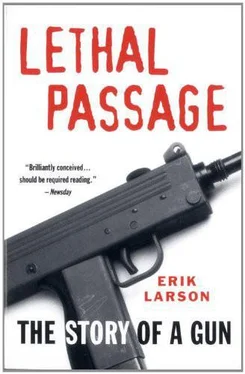
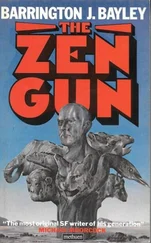


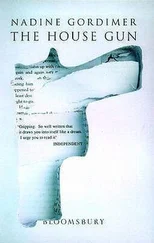

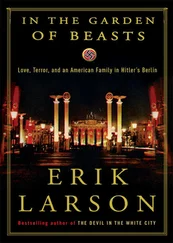

![Ричард Деминг - Whistle Past the Graveyard [= Give the Girl a Gun]](/books/412176/richard-deming-whistle-past-the-graveyard-give-t-thumb.webp)
